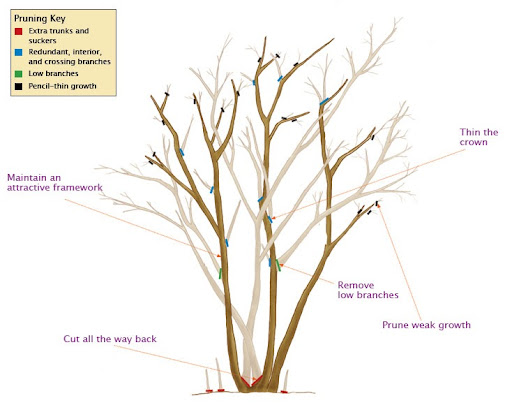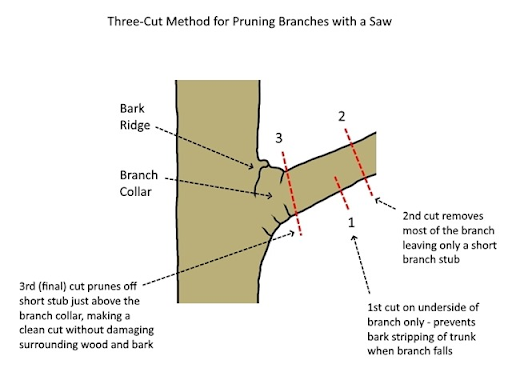For the Love of Pruning: Tips and Tricks for a Successful Pruning Season
go.ncsu.edu/readext?845424
en Español / em Português
El inglés es el idioma de control de esta página. En la medida en que haya algún conflicto entre la traducción al inglés y la traducción, el inglés prevalece.
Al hacer clic en el enlace de traducción se activa un servicio de traducción gratuito para convertir la página al español. Al igual que con cualquier traducción por Internet, la conversión no es sensible al contexto y puede que no traduzca el texto en su significado original. NC State Extension no garantiza la exactitud del texto traducido. Por favor, tenga en cuenta que algunas aplicaciones y/o servicios pueden no funcionar como se espera cuando se traducen.
Português
Inglês é o idioma de controle desta página. Na medida que haja algum conflito entre o texto original em Inglês e a tradução, o Inglês prevalece.
Ao clicar no link de tradução, um serviço gratuito de tradução será ativado para converter a página para o Português. Como em qualquer tradução pela internet, a conversão não é sensivel ao contexto e pode não ocorrer a tradução para o significado orginal. O serviço de Extensão da Carolina do Norte (NC State Extension) não garante a exatidão do texto traduzido. Por favor, observe que algumas funções ou serviços podem não funcionar como esperado após a tradução.
English
English is the controlling language of this page. To the extent there is any conflict between the English text and the translation, English controls.
Clicking on the translation link activates a free translation service to convert the page to Spanish. As with any Internet translation, the conversion is not context-sensitive and may not translate the text to its original meaning. NC State Extension does not guarantee the accuracy of the translated text. Please note that some applications and/or services may not function as expected when translated.
Collapse ▲February is the perfect month to be outdoors pruning your trees and shrubs! But before getting your shears out, you’ll want to know which shrubs need pruning and which do not. Pruning shrubs that bloom in the spring (like forsythia, camellias, flowering cherry, flowering dogwood, redbud, witch hazel, pieris, or daphne) would mean cutting off buds that are almost ready to bloom. You’ll want to wait until after they bloom to prune these shrubs. Most summer flowering shrubs and evergreens are perfect to prune and shape now! Be careful not to prune too much off of evergreen and needled shrubs. You should only remove ⅓ of the plant per season, so if it’s still “too big”, wait until next year to tackle another third of the plant.
Along with proper timing, it is important to know how that particular plant was cultivated to look. By this, I mean that some plants are meant to be shaped into boxes, hedges, or cone shapes, but some are not. Many shrubs are meant to be hand-pruned rather than sheared with hedge shears and end up losing the form that made them desirable in the first place. Take the Crape Myrtle for example. These trees are meant to look natural and thrive when they are pruned correctly. However, you see it everyday throughout the spring where people are “topping” these trees and removing their growth down to the larger trunks and it happens year after year. All of the new growth after this type of removal is “un-natural’. Limbs grow straight up instead of the natural angles.
Another shrub set that a lot of people “mess up” each year without realizing are the hydrangeas. The only hydrangeas that need to be pruned in the spring are the panicle hydrangeas and the smooth hydrangeas. Panicle hydrangeas need ⅓ of last year’s growth removed, along with any dead, damaged, thin or crossing branches. Common panicle hydrangea varieties include: ‘Limelight’, ‘Little lime’, ‘Bobo’, ‘PeeGee’ and ‘Vanilla Strawberry’. Smooth hydrangeas thrive when they are pruned fairly close to the ground. If a lot of old growth is left on smooth hydrangeas, they can become top-.heavy, causing their blooms to bow towards the ground. Common smooth hydrangea varieties include: ‘Annabelle’, ‘Invincibelle’, and ‘Incrediball’. Oakleaf and mop-head hydrangeas should not be pruned in the spring, but should wait until right after their blooms fade.
With proper pruning time and form in mind, here are some other tips and tricks to help you get the most out of your pruning season. First, having a good set of pruning tools will save you a lot of headache. Hand pruners are meant to cut stems ½ inch or less, while lopping shears are meant to cut larger branches (up to 2 inches) due to the extra leverage of longer handles. Placing your stems in the crook between the two blades will allow for better cuts, especially on larger branches. A pruning saw should be used on branches that are larger than 2 inches. On tree limbs, remember to use the 3 cut method for removal. This method will help prevent tree injury. When pruning, keep a small spray bottle of rubbing alcohol and a rag nearby. It’s recommended to disinfect your tools before moving from one plant to another, and between cuts when you are working on a plant that has some disease problems. Remember to keep these tools sharp and well oiled after you are finished pruning to prolong their lifespan.
For overgrown trees and shrubs, even fruiting trees and shrubs, the best thing to do is to first cut out any dead or damaged branches. Next you can get rid of any growth that will not produce good fruit (young scraggly growth that is too low or in the way, and limbs that are crossing within the canopy that are impeding good air flow and would not get good light penetration). After this, it may surprise you how much of the plant you are left with. If you still have a plant that is way too big, make select cuts that will remove approximately ⅓ of the plant (these are usually older canes/limbs that are still living, but need to be transitioned out to prepare for new canes/limbs). If you have little of the plant left, wait until the next year to make any select cuts.
If you have any questions regarding pruning, whether on old or young trees or shrubs, fruiting, flowering, or evergreen, be sure to call our office at 828-632-4451. I am happy to help!






